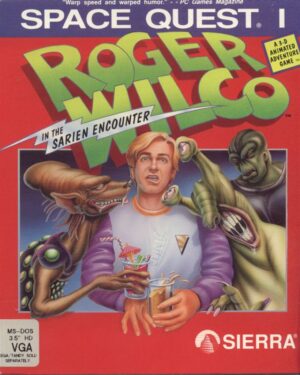Retro Replay Review
Gameplay
Tangram’s gameplay revolves around the deceptively simple task of arranging seven geometric shapes into a target silhouette. You begin each level with a predefined pattern—ranging from graceful animals to intricate architectural forms—and must drag and drop the corresponding shapes into place before time runs out. The controls are intuitive: hover over a shape on the right-hand panel to select it, click to place, and use the right mouse button to rotate. This fluid interaction ensures you can focus on solving puzzles rather than wrestling with the interface.
(HEY YOU!! We hope you enjoy! We try not to run ads. So basically, this is a very expensive hobby running this site. Please consider joining us for updates, forums, and more. Network w/ us to make some cash or friends while retro gaming, and you can win some free retro games for posting. Okay, carry on 👍)
What adds real tension to the experience is the time-limit mechanic. Each level grants you a base amount of time, but finishing faster rewards bonus seconds that carry over to later stages. Should you exhaust both the main timer and the bonus pool, the game even offers the option to dip into your accumulated score for extra seconds. This creates a high-stakes dilemma: risk your hard-earned points for vital time or restart and try to shave off seconds for a more efficient run.
Tangram also features two difficulty modes—Novice and Expert. Novice mode eases you in by slowing the clock to half-speed and delivering puzzles in order of increasing challenge. Expert mode, by contrast, throws the shapes at you in a randomized sequence and keeps the timer ticking at full pace. This dual-mode system ensures that both casual players and seasoned puzzle masters find an appropriate level of intensity.
Graphics
Visually, Tangram embraces minimalism and clarity. The backdrop remains uncluttered, letting the bold outlines and solid fills of the seven shapes stand out crisply against a neutral canvas. This clean presentation aids concentration and aligns perfectly with the game’s cerebral focus. Rather than flashy effects, the aesthetic thrives on simplicity, ensuring that your attention stays firmly on the puzzle at hand.
The shapes themselves are rendered with smooth edges and consistent color-coding. Each shape category—triangles, squares, trapezoids—has its own hue, making it easy to distinguish pieces at a glance. Subtle shading and a faint 3D bevel give the tangram tiles just enough depth to feel tactile, without drifting into unnecessary visual noise. For a puzzle game, these design choices are spot-on.
Levels are framed neatly in a dedicated work area, with the target silhouette faintly visible until you hover a piece nearby. This “ghost” preview helps you align shapes accurately. Transitions between levels are swift, with a brief animation that celebrates your success when you complete a silhouette under time. These little touches inject personality into what could otherwise be a sterile experience.
Story
While Tangram is not narrative-driven in the traditional sense, it carries a rich cultural lineage that spans over 4,000 years. Originating in ancient China, the seven-piece puzzle has enthralled generations with its blend of geometry and creativity. In this digital incarnation, the game pays homage to that heritage by offering 200 distinct patterns—each one a nod to historical motifs, folk tales, and the inherent artistry of form.
As you progress, you’ll notice thematic groupings among the silhouettes. Early stages might present simpler shapes like boats or birds, evoking pastoral scenes from old Chinese scrolls. Later puzzles morph into more elaborate structures—pagodas, dragons and mythical creatures—drawing inspiration from folklore and traditional woodblock prints. This evolving gallery of patterns subtly weaves a tapestry of cultural references as you advance.
Although there’s no voiced narrative or cutscenes, the puzzle progression itself tells a story of mastery. Each completed silhouette represents a small victory in a grand tradition of mathematical artistry. The sense of continuity—from ancient scholars puzzling over wooden tiles to you solving digital patterns—provides a quiet but potent narrative thread that runs through the entire experience.
Overall Experience
Tangram offers a deeply satisfying blend of challenge and elegance. Its straightforward mechanics are perfect for short, focused sessions, yet the cumulative time-bonus system and Expert mode provide ample replay value for puzzle enthusiasts. Whether you have five minutes or fifty, the game fits seamlessly into your schedule and beckons you back with its ever-shifting roster of shapes.
The combination of minimalist graphics and precise controls crafts a meditative atmosphere. There’s a Zen-like quality to rotating and placing shapes under pressure, and the game strikes an admirable balance between urgency and calm. You’ll find yourself slipping into a rhythm of quick decisions and gentle refinement, all while racing the clock and watching your bonus time ebb and flow.
In sum, Tangram is more than a mere digital translation of an ancient pastime—it’s a thoughtfully designed puzzle experience that honors its roots while delivering modern gameplay polish. For fans of logic challenges, geometry, or cultural curiosities, this version of the classic tangram stands as a compelling purchase. It’s a timeless brain-teaser wrapped in a sleek interface, ready to engage both newcomers and veteran puzzlers alike.
 Retro Replay Retro Replay gaming reviews, news, emulation, geek stuff and more!
Retro Replay Retro Replay gaming reviews, news, emulation, geek stuff and more!









Reviews
There are no reviews yet.